 Sunday - January 31, 2010
Sunday - January 31, 2010
Lieutenant Colonel Lee Archer, Tuskegee Airman, served his country well. RIP, Sir.
He had to overcome a lot in those days and apparently he did. But it could not have been easy. He deserves our respect and thanks.
RIP
Lieutenant-Colonel Lee Archer
Lieutenant-Colonel Lee Archer, who died on January 27 aged 90, was a member of America’s segregated “Tuskegee” air corps and recognised as the only black fighter “ace” during the Second World War; subjected to racial discrimination and prejudice, both within and outside the Army, he and his comrades none the less served their country with great distinction.
Strict racial segregation existed when Archer volunteered to be a pilot. He and like-minded African-Americans were at first rejected because many people thought black men lacked intelligence, skill, courage and patriotism.
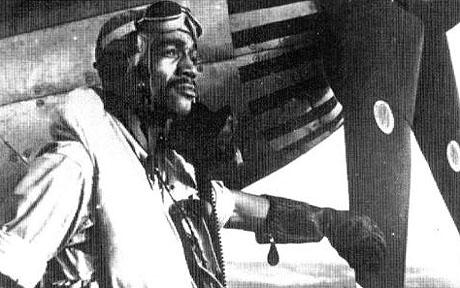
Eventually, in June 1941, a series of legislative moves by the US Congress forced the Army Air Corps to form an all-black combat unit, despite the War Department’s reluctance. The pilots trained at a segregated Army Air Corps unit at Tuskegee Army Airfield, Alabama, and for ever more became known as the “Tuskegee Airmen”.
Lee A Archer was born on September 6 1919 in Yonkers and raised in New York’s Harlem district. He left New York University to enlist in the air corps in 1941 but, after rejection, trained in the infantry and then as a signaller. In December 1942 he was accepted for pilot training and left for Tuskegee. He graduated in July 1943, first in the order of merit, and was commissioned as a second lieutenant.
Archer was assigned to 302nd Fighter Squadron of 332nd Fighter Group, the USAAF’s first all-black unit, which had been formed amid great controversy in October 1942. The group moved to Italy early in February 1944 and soon began operations flying the Bell P-39 Airacobra on ground attack missions before converting to the P-51 Mustang, when their main role was to provide close escort to the USAAF’s heavy bomber forces. In their red-tailed Mustangs they developed a reputation as one of the war’s most effective fighter escort groups. It was claimed that they never lost a bomber, but postwar research suggests this might be a slight exaggeration. Nevertheless, the “Red Tails” earned near-mythic status.
On July 18 1944 they flew their first escort for a large formation of B-24 bombers. When a fierce air battle ensued over southern Germany, eleven Messerschmitt Bf 109s were shot down, one by Archer. The long-range Mustangs were able to accompany the bombers all the way to the target and back, and the bomber pilots always felt safe once their “little friends” had joined the formation. Many were unaware that all their “friends” were black airmen.
On October 22 1944 Archer took part in a sweep along the Danube. With his leader, he was attacking a Heinkel bomber when seven Messerschmitts appeared on the scene. In the ensuing battle, Archer shot down three of them, the last as it attempted to land.
The “Red Tails” escorted bomber formations to attack the oilfields of Romania, rail yards in Austria and on long-range operations to Regensburg and Munich. Archer shared in the destruction of another Messerschmitt and he was also credited with destroying six enemy aircraft on the ground, in addition to several locomotives, motor transports and barges. By the end of the war he had flown 169 missions.
The Tuskegee Airmen proved their racist detractors wrong. They were credited with shooting down 109 enemy aircraft and they proved some of the USAAF’s best pilots, many going on to win high rank once segregation in the military was ended in 1948.
Despite their prowess, few gallantry medals were received though Archer was awarded the DFC, the Air Medal with 18 clusters and a Distinguished Unit Commendation.
Archer retired from the USAAF in 1970. He joined General Foods Corporation, becoming one of the era’s few black vice-presidents of major American companies. He was an adviser on the deal that created the conglomerate TLC Beatrice in 1987, then the largest black-owned and managed business in the US. After retiring from General Foods in 1987, he founded the venture capital firm Archer Asset Management.
In 2005 Archer and three of his Tuskegee colleagues flew to Iraq to address active duty airmen serving in the current 332nd Group.
Archer lived long enough to see the service of Tuskegee airmen fully, if belatedly, acknowledged. In March 2007, about 350 airmen and widows received the Congressional Gold Medal of Honour from President George W Bush at a ceremony in the US Capitol. The present-day 99th Flying Training Squadron’s aircraft are adorned with red tails in honour of the black airmen. Many streets and parklands bear their name, and in August 2008 the city of Atlanta officially renamed a portion of the state’s Route 6 in their honour.
On December 9, 2008 Archer and the remaining Tuskegee Airmen were invited to attend the inauguration of Barack Obama.
Honoured by the American Fighter Pilots’ Association, Archer was described by a colleague as “extremely competent, sometimes stubborn but with a heart of gold. He treated people with respect and demanded respect by the way he carried himself.”
Lee Archer’s wife Ina, whose name adorned the nose of his Mustang, died in 1996. He is survived by three sons and a daughter.
Posted by peiper
Filed Under: • Heroes • OBITITUARIES •
• Comments (2)
 Monday - November 30, 2009
Monday - November 30, 2009
His Tremendousness Giorgio Carbone. Fun while it lasted. RIP Giorgio.
Here’s an obit of a somewhat different nature. By different I mean of course the individual involved.
Seems kinda loony toonish, but I’d never have thought this fellow would appear in the Telegraph. Interesting guy however and hey, he hurt nobody and had a bit fun. I hope.
TELEGRAPH OBITUARIES
His Tremendousness Giorgio Carbone, who died on November 25 aged 73, was the elected prince of Seborga, a self-proclaimed principality on the Italian Riviera.
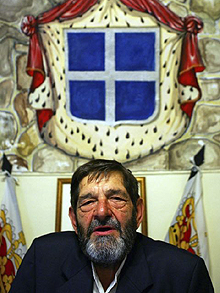
Carbone claimed the sovereignty of Seborga (pop. 364) from the Italian government in 1963 and took the title His Tremendousness. A former flower-grower, he produced documents from the Vatican archives to prove that the village was never the property of the House of Savoy and therefore not part of the Kingdom of Italy after 1861. He insisted that Seborga had been a sovereign state since 954, a principality from 1079, and minted its own coins after 1666.
The villagers of Seborga, which lies near the picturesque Ligurian town of Bordighera, were enchanted by Carbone’s quirkiness and he won 304 of a possible 308 votes to represent them. He was re-elected in 1995.
As His Highness Giorgio I, Prince of Seborga, Carbone did not draw a salary, but he could help himself to cheese and ham from the village shop without paying.
He was born in 1936, the son of local flower grower who followed his father into the trade. His grand plans for the principality involved a cabinet of 15 ministers, a dozen members of parliament, and minting a currency, the Luigino. Citizens continued to pay their taxes to the Italian government, however, using the lira and today the euro.
Seborga has its own flag, a white cross on a blue background, a patron saint, St Bernard, and a Latin motto: Sub Umbra Sede (Sit in the shade).
Carbone managed to convince around 20 states to recognise Seborga. “The first state to step forward and recognise us was one of those revolutionary ones: Burkina Faso,” he said. Consular representation was maintained in 10 countries.
Seen widely as a ploy to attract tourists, the principality was never taken seriously by the Italian government, prompting Carbone’s determination to create a social security network that would allow Seborga to be fully detached. He told reporters that he was in negotiations with large insurance companies but little progress was made.
Perhaps tiring of his role, Carbone announced in January 2006 that he would retire upon reaching the age of 70. But a challenge to his authority a few months later appeared to re-energise him.
A woman calling herself Princess Yasmine von Hohenstaufen Anjou Plantagenet wrote to the newly-elected Italian president, Giorgio Napolitano, claiming that she was the true heir to Seborga’s throne and offering to hand it over to Italy. Carbone gruffly dismissed her claim, voicing doubts over her lineage: “I have never seen her,” he said. “We call her the internet princess”.
He leaves no heirs, and Seborga’s royal destiny is uncertain.
Posted by peiper
Filed Under: • OBITITUARIES •
• Comments (0)
 Tuesday - November 24, 2009
Tuesday - November 24, 2009
pity poor Greece …….. no Spartan king to hold the pass …
H/T EUROPE NEWS
They just keep on coming and they invade on many fronts. And they usually get to stay, sucking the lifeblood out of every place that makes a place for them. They are like an army of ants but not as interesting. Their goal I believe , is to make the place they find, as much like the place they left as they can are allowed to.
Greece is Being Systematically Invaded by Mohammedans
Sheikyermami
November 2009
LESBOS - “Stop the boat! Stop the boat now!” the captain of the Greek Coast Guard patrol vessel yelled over the bullhorn, turning a spotlight on the flimsy dinghy as it chugged toward this island in the Aegean Sea.
As the dinghy sputtered to a halt, a crowd of frightened faces squinted up into the light. Squeezed onto the 6-meter, or 20-foot, vessel were 30 Afghan migrants — men, women, children including babies — and their smugglers: two Turkish boys.
The interception occurred one Saturday night earlier this month. But the migrants, the smugglers and the coast guard officers are protagonists in a daily drama played out in this seven-kilometer-wide strait separating the island of Lesbos from the Turkish coast, one of the narrowest sea crossings between the two countries and a favored route for smuggling.
Hampering European Union efforts to curb a relentless influx of desperate people seeking to enter the bloc through this slender channel are age-old tensions between the E.U. member Greece and the E.U.-hopeful Turkey and the ever inventive tactics of opportunists profiting from the situation.
“It’s kids like these that smugglers are sending over to do their dirty work,” the coast guard captain said as his colleagues handcuffed the two boys to the deck of the patrol boat. The youths said they were Turks, age 16 and 17, and nodded sheepishly when asked if they were doing it for the money.
“We’ve seen one kid three times,” the captain said, noting that minors, who cannot be prosecuted under Greek law, were sent back to Turkey, but often tried to return to Greece a few weeks later. The captain asked not to be identified by name for security reasons.
The dinghy piloted by the teenagers was one of hundreds of boats that were stopped in waters off Lesbos in patrols organized by the island’s coast guard in association with the E.U.’s border monitoring agency, Frontex. A total of 7,745 migrants have been detained on the island this year. This is partly because the patrols, ostensibly aimed at pushing back undocumented immigrants, often turn into rescue exercises.
“Smugglers often burst the dinghies as they know we will have to save the migrants while they escape,” the captain said. He said the Turkish teens might have been planning to do the same: They were wearing wet suits under their clothes which, when searched, revealed mobile phones but no weapons or identification documents.
Some migrants are not lucky enough to be spotted. On Oct. 27, 10 Afghans, including eight children, drowned when their boat hit a rocky outcrop off the northeastern coast of Lesbos.
Escape tactics by smugglers and the failure, reported by Frontex, of Turkish officials to stop suspicious vessels as they leave, ensure that a steady stream of migrants reaches Lesbos and other islands in the Aegean.
Until last month, those arriving on Lesbos were put in a temporary reception center. But the facility, near the village of Pagani, was closed after overcrowding reached such levels that migrants started to riot, sparking protests by human rights groups. Of the hundreds of migrants released, some were given ferry tickets to the major port of Piraeus, near Athens, and deportation slips ordering them to leave Greece within 30 days. Others were transferred to a facility, now filled beyond its capacity, on the nearby island of Chios.
Detention centers across Greece had been accommodating some of the overflow, but unions representing the Greek police say that these holding cells also are now packed.
There is no sign of the influx ebbing. According to Frontex, 14,000 migrants were intercepted at sea between Greece and Turkey in the first six months of this year, up 47 percent from the 9,500 stopped in the first half of 2008. In contrast, arrivals by undocumented migrants to Italy and Spain, also considered external E.U. border states, dropped by 70 percent. A reception center on the Italian island of Lampedusa was crammed this time last year and is now empty.
“A trend of reduced migration flows in the Mediterranean region is not reflected in Greece, which remains the main entry point to the E.U. for illegal immigrants,” said Gil Arias Fernández, the deputy executive director of Frontex. The problem will persist, he said, “as long as Turkish authorities do not stop migrants near their border.”
Afghans dominate the influx of migrants, joined by a growing number of people from countries in North and West Africa, shunning routes via Italy and Spain because of repatriation pacts in force between these nations and their countries of origin. A similar agreement exists between Greece and Turkey, but the authorities in Greece complain that it is not being enforced by Ankara, despite pressure from the European Union. This hampers the patrols.
The rest of the article is at EUROPE NEWS
GO TELL THE SPARTANS, STRANGER PASSING BY, THAT HERE, OBEDIENT TO THEIR LAWS, WE LIE.
Posted by peiper
Filed Under: • Border Security • Illegal-Aliens and Immigration • OBITITUARIES • RoPMA •
• Comments (5)
 Monday - October 19, 2009
Monday - October 19, 2009
GERMANY: FIGHTER ACE GUNTHER RALL PASSES AWAY AGE 91.
Brit papers like The Telegraph do make note of the other side on folks like General Rall.
An interesting obit. I’ve read about this ace in the past. Germans didn’t use our term “Ace.” They preferred “Expert.” And so many were.
Generalleutnant Günther Rall, who has died aged 91, was one of the few outstanding German fighter leaders to survive the Second World War; by the end of the conflict he was the third-highest-scoring fighter ace of all time with 275 aerial victories.
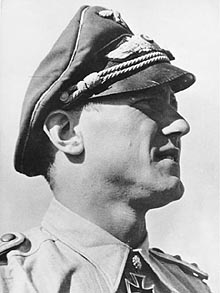
In postwar years he was one of the founding fathers of the modern German Air Force and rose to become its chief.
In the spring of 1941 Rall was a squadron commander in Jagdgeschwader (fighter wing) JG-52 flying the Messerschmitt Bf 109 based in Romania. By this time Germany and the Soviet Union were at war and Soviet bombers were attacking the crucial oil refineries. In five days Rall and his men destroyed some 50 Soviet bombers and were next sent to the southern sector of the Eastern Front where Rall’s victories mounted rapidly against the inferior Soviet fighters and bombers.
After shooting down his 36th victim, Rall was attacked by an enemy fighter and his aircraft badly damaged. He just managed to cross the German lines before crash landing in a rock-strewn gully. He was severely wounded and knocked unconscious but German tank crews dragged him clear. He eventually reached a hospital in Vienna where it was found that he had broken his back in three places. Here he was treated by a woman doctor, Hertha, who later became his wife.
When Austria was annexed in 1938 Hertha had helped Jewish friends escape to London, even as Nazi discrimination and anti-Semitic policy made their lives intolerable. Indeed, while Rall was always a devoted soldier in the service of his country, when the facts of the Holocaust were presented to him he came to look on them as “the greatest madness of this insane war”.
“We knew about Dachau, the concentration camps, but not exactly what happened there,” he later explained. “During the war I was hardly in Germany. The airfields were on the front, we had no idea of what was happening behind our backs. When I heard of Auschwitz, I did not believe it. We said clearly: ‘That’s propaganda’.”
Having been paralysed for months Rall returned to operational duty in August 1942. On September 3 he was decorated with the Knight’s Cross of the Iron Cross after his 65th victory. During the following month his score increased beyond 100, bringing him the oak leaves for his Knight’s Cross, the 134th recipient of the coveted award. In November they were presented to him personally by Hitler. Afterwards, as they sat together by the fire, Rall asked Hitler: “Führer, how long will this war take?” Hitler replied: “My dear Rall, I don’t know.” That surprised him. “I thought our leaders knew everything,” Rall recalled, “and suddenly I realised they didn’t know anything.”
In April 1943 Rall was promoted to command III/JG-52. He was constantly in action for the next 11 months. On August 29 he recorded his 200th victory on his 555th operational flight and on September 12 he was again summoned to Berlin when Hitler awarded him the Swords to his Knight’s Cross, the 34th man to be so honoured. Rall returned to operations and in October accounted for another 40 aircraft – more than many of Germany’s best pilots achieved throughout the entire war.
As the war progressed, the obsolete Soviet fighters were steadily replaced by others with far superior performance. Nevertheless, the great majority of Rall’s successes were in fighter-to-fighter combat. During his time on the Eastern Front, Rall came up against many excellent Soviet pilots and was himself shot down seven times. Finally, in April 1944, he returned to Germany.
The son of a merchant, Günther Rall was born on March 10 1918 in Gaggenau in the Black Forest. When he was three, his family moved to Stuttgart where he completed his education at the High School. On graduation in 1936 he joined the Army to be an infantry officer and whilst at the Dresden Kriegsschule met an old friend whose tales of flying convinced him that he should apply to be a pilot.
During the 1930s Rall had viewed the rise of Hitler with no particular enthusiasm but, like many soldiers, approved of the way in which Hitler and the National Socialists had ended decades of humiliation for German-speaking people.
“When Hitler became chancellor,” Rall remembered, “there was no unemployment, no more Rhineland occupation, no more reparations to the victors [of the Great War]. That impressed us as young soldiers, no doubt about it.”
In 1939 Rall trained as a fighter pilot on a base east of Berlin and was transferred to JG-52. Flying a Messerschmitt Bf 109, he saw his first air combat in May 1940 during the Battle of France. On May 18 he shot down a French Air Force Curtis Hawk fighter flown by a Czech sergeant who escaped by parachute. With the fall of France, Rall’s unit moved to Calais.
He flew throughout the Battle of Britain, when his unit was assigned to escort Junkers Ju-87 Stukas (dive bombers), very slow-flying aircraft. The fighters had to stick with them, giving up all of their superiority and speed; the unit suffered heavy losses against the Spitfires and Hurricanes, losing the group commander, the adjutant and all three squadron commanders in a few weeks. Rall soon found himself rapidly promoted to squadron leader before the unit was finally withdrawn in September to rebuild and train new pilots.
Rall was critical of the tactics used which made his valuable and capable aircraft vulnerable to attack by fighters. He always spoke very highly of the RAF. During a postwar interview he said: “In my experience, the RAF pilot was the most aggressive and capable fighter pilot during the Second World War.”
Once the squadron had been brought up to strength, it was transferred to Romania to defend the oil refineries and bridges over the Danube during the spring of 1941. After providing support for the German airborne assault on Crete, Rall’s unit hurried back to Romania following the outbreak of war with the Soviet Union.
After returning from the Eastern Front, Rall was made Gruppenkommadeur of II/JG-11, flying Bf 109s on homeland defence duties, primarily against the high-flying daylight bomber forces and their escorting fighters of the USAAF 8th Air Force. On May 12 1944 he attacked a large formation and shot down two USAAF P-47 Thunderbolts, but was then himself shot down. He was severely wounded in the hand but managed to bail out over Frankfurt. His wound became badly infected and he remained in hospital for six months.Because he was deemed too precious for the morale of the people, and could not fire his guns because of a missing thumb, he was kept from combat. Rall became an instructor, and studied several American planes that had fallen into the possession of the Luftwaffe to find their strengths and weaknesses and to develop better tactics to teach his students. He flew the P-51 and was amazed at the luxury and quality of the American planes. He once explained that being unable to fly in combat probably saved his life at a time when Germany was totally outnumbered and the chances of staying alive were drastically reduced. But he returned to active duty in November.
Rall’s last command was as the leader of JG-300 and on arrival at the unit’s airfield he was forced to dive into a ditch as USAAF fighters strafed the line up of Bf 109s – 15 were left burning. The Luftwaffe was in retreat and he flew his final operations from Salzburg. During this time he flew the Messerschmitt Me 262 jet fighter but never in combat. He and his inexperienced pilots flew whenever Rall could commandeer fuel. There was no organised air defence system, intelligence on Allied movements was negligible and Rall led his pilots against targets of opportunity.
He flew his 621st and final mission at the end of April. Towards the very last days of the war he asked the men in his command to try to stay alive rather than get involved in senseless actions. He felt it was his responsibility as a leader to try to save the few lives that he could as the war was virtually over and its outcome could not be reversed. A few days later he was captured by the Americans.
http://www.acepilots.com/german/rall.html
Posted by peiper
Filed Under: • OBITITUARIES •
• Comments (2)
 Monday - October 05, 2009
Monday - October 05, 2009
Last surviving leader of the armed Jewish revolt against the Nazis in the Warsaw
RIP .... One heck of a brave guy even if he didn’t think he was special.
Aren’t we lucky we never had to experience what this man did. Not to mention all the others. No other comments for me to make except to say how thankful I am to have been born and raised an American. I sadly forget how lucky until I see something like this. Reminders are good. None of us who never faced his experience can fully grasp it all.
Marek Edelman, who died on October 2, probably aged 90, was the last surviving leader of the armed Jewish revolt against the Nazis in the Warsaw ghetto; having commanded the heroic but doomed struggle in April 1943 he was one of a tiny number of fighters to escape with his life, eventually taking part in the equally ill-fated citywide Uprising the following year.
Edelman was just 20 when the Nazis invaded Warsaw. By November 1940 the invading army had cut off his district from the rest of the city with walls and wire. As the anti-Semitic directives of the occupation were put into force, hundreds of thousands of Polish Jews were forced into the ghetto, inflating its population to almost half a million.
Conditions became intolerable and in the course of 1941 the ghetto population was decimated by disease and malnutrition. Early the following year however, with Hitler’s decision to implement the Endlösung, or final solution to “the Jewish question”, plans were put in place to liquidate the ghetto and its remaining occupants entirely.
From July 1942, Jews were herded through the ghetto to a square at its southern end, and on to trains 6,000 at a time. From there, the destinations were death camps. Two months after the ghetto clearance had begun, more than 300,000 Jews had been transported to the gas chambers. But even as Jews were encouraged on to the trains to Treblinka with promises of better conditions at their destination, Edelman and a small band of others were laying down plans for armed resistance.
He was under no illusion about the real fate of those leaving , and using the small influence of a position at the ghetto hospital, Edelman plucked those he thought would be useful to the rebel cause off the death transports.
By the time the Nazis paused the ghetto clearance, in September 1942, only 60,000 Jews remained inside. Edelman and his comrades, however, had little doubt that the Germans would return to finish the job. They began acquiring weapons and organising themselves into units which would try to make up for their lack of training and munitions with an intimate knowledge of the ghetto, both above ground, and, through its sewer network, below.
The Nazi onslaught began on April 19 1943, as more than 2,000 Nazi troops moved in. “The Germans weren’t expecting resistance of any kind, let alone that we would take up arms,” Edelman recalled recently. In fact, some 220 fighters of the Zydowska Organizacja Bojowa, (ZOB, the Jewish Combat Organization), of which Edelman was deputy commander, had split into small groups each armed with a pistol, a few grenades, and some homemade explosives. They put up fierce resistance and the Nazi troops were forced to withdraw.
Over the next three weeks the fighting proved intense, with Jewish fighters killing dozens of Nazi soldiers. Inevitably, however, the losses were far higher on their own side, and, surrounded on May 8, ZOB’s leader, Mordechai Anielewicz, committed suicide, leaving Edelman in command. “After three weeks,” Edelman recalled, “most of us were dead.”
But just as Nazi forces were flushing out the few remaining fighters by burning down the ghetto ("we were beaten by the flames, not the Germans,” Edelman always insisted) two “liaison men” from the Polish underground on the “Aryan side” emerged through the sewers that still linked the ghetto with the rest of the city.
Though many of its tunnels were barely two feet high, and often booby-trapped, the sewer network had long proved a vital escape route. If they could reach the other side, the liaison men promised to shelter Edelman and his few remaining comrades. Accordingly, on the morning of May 10, as bemused passers-by looked on, Edelman and the filthy remnants of the ZOB emerged through a manhole in Warsaw proper. The fighters who remained behind were never heard of again. The uprising was at an end.
“We knew perfectly well that we had no chance of winning,” he recalled. “We fought simply not to allow the Germans alone to pick the time and place of our deaths. We knew we were going to die. Just like all the others who were sent to Treblinka.” Indeed, Edelman added, far from going passively, those who went steadfastly to Treblinika had shown the ultimate courage. “Their death was far more heroic. We didn’t know when we would take a bullet. They had to deal with certain death, stripped naked in a gas chamber or standing at the edge of a mass grave waiting for a bullet in the back of the head. It is an awesome thing, when one is going so quietly to one’s death. It was easier to die fighting than in a gas chamber.”
Marek Edelman was probably born in Homl, now Belarus, on New Year’s Day 1919. That, in any case, was the date marked on his official documents, but he freely admitted that he could not know for sure. “I don’t know my exact age,” he said in 2007. “My father died when I was very little, I almost don’t remember him at all. My mother died a few years later, so there was no one who could tell me when I was born.”
Posted by peiper
Filed Under: • OBITITUARIES •
• Comments (2)
 Thursday - July 23, 2009
Thursday - July 23, 2009
Major-General Meir Amit … between 1963 and 1968, head of Mossad, the Israeli foreign intelligence
He served his country, and I bet there wasn’t a politically correct bone in his body.
RIP Major Amit
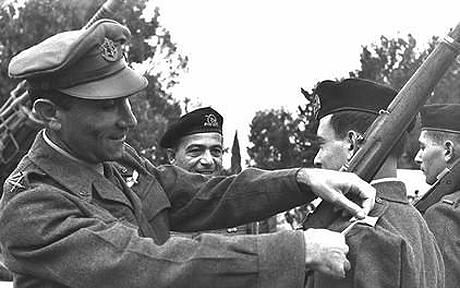
Major-General Meir Amit, who died on July 17 aged 88, was a leading figure in the Israeli Defence Forces (IDF) and, between 1963 and 1968, head of Mossad, the Israeli foreign intelligence service.
22 Jul 2009
In one operation that helped define Mossad’s enduring reputation for brilliance and daring, and which provided crucial intelligence a year before the Six Day War, he orchestrated the defection of an Iraqi pilot, complete with his MiG-21 fighter.
The operation began in mid-1963, shortly after Amit became head of Mossad, when he was approached by the head of Israel’s Air Force, Ezer Weizman, who said simply: “If you bring me a MiG-21, you will have done a good day’s work.”
The aircraft was the most advanced and formidable of Russian fighters, and was in front-line service with three of Israel’s neighbours and enemies: Egypt, Iraq and Syria. Weizman wanted a MiG-21 in order to assess its technology, flight and combat performance.
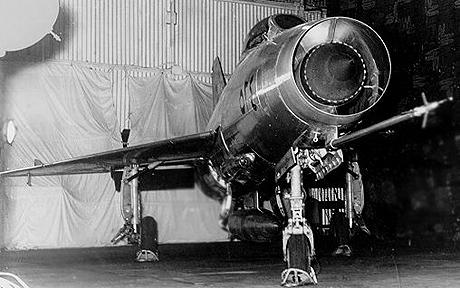
Determined to get one, Amit took personal charge of Mossad’s “Operation Focus”, aimed at persuading an Arab pilot to defect with his plane. He settled on an Iraqi deputy commander of a MiG-21 squadron, Munir Redfa, whose Maronite Christian family was living in Baghdad.
When Redfa agreed to meet Mossad agents, Amit flew to Italy and, through a peephole in a hotel in Rome, observed his officers persuading the pilot to fly out his MiG-21 in return for half-a-million pounds and a guarantee that his wife, child, parents, grandparents and extended family would all first be smuggled out of Iraq.
The operation came to fruition three years after it had begun. On August 16 1966 Redfa took off from an airbase near Mosul, in northern Iraq, on a training mission. Once airborne, he headed for Turkey, then over the Mediterranean to rendezvous with Israeli fighters which escorted him south; by the time the Iraqi pilot landed on his last drops of fuel at a military base in Israel, his extended family had already been smuggled out of Iraq and the promised money was in his bank account.
Amit was born Meir Slutzky on March 17 1921 at Tiberias, on the shores of the Sea of Galilee, in northern Palestine, and attended the agricultural school at Kibbutz Givat Ha’shlosha and the Balfour Reali secondary school in Tel Aviv. At 15 Meir joined Hagana, the clandestine military organisation of the Jewish community in Palestine, then under the British Mandate. He served as a noter, a mobile settlement policeman, having taken the Hebrew name Amit.
During the 1947-49 War of Independence, Amit fought as deputy and battalion commander against the Syrians, Iraqis and Egyptians. In the fierce battle against the Jordanians at Jenin, in the north of what is now the West Bank, he was seriously wounded while leading a charge against a heavily fortified enemy position.
But Amit soon returned to full service and in March 1949, during the last phase of the war, he led his battalion, with other forces, in “Operation Uvda” to occupy the southern town of Eilat.
On May 2 1951 Syrian forces took positions in Tel Mutilla, in the demilitarised zone between Israel and Syria, and Amit was ordered to dislodge them. Leading his Golani infantry brigade – he had become its commander in 1950 – Amit pressed the attack for four consecutive days, compelling the Syrians to withdraw. But with 40 of his soldiers killed in action and many others wounded, he faced serious criticism from senior officers and was called to defend his actions.
Amit was cross-examined by Moshe Dayan, a rising star in the Israeli army soon to become Chief of Staff, who rejected the criticisms out of hand. Far from being a failure, Dayan suggested, the action had been a success and Amit’s force had shown the kind of spirit that other Israeli units needed: courage and perseverance in the most difficult circumstances.
After training at the Staff College, Camberley, Amit was appointed head of Operations Branch in1956, a post which effectively made him second-in-command to Dayan. During the Suez crisis of the same year, as Dayan spent much of his time on the battlefield flitting between command posts, Amit was left at HQ to run the war. The IDF’s success was, in many ways, Amit’s own and in 1958 he was rewarded by Dayan, yet again, with control of Israel’s Southern Command.
That year, however, Amit’s career, and life, almost came to abrupt end. In a routine airborne training he was critically wounded when his parachute only partially opened. Amit’s survival was in doubt for days, and he was forced to spend 18 months recovering in hospital.
His active service seemed to be over, and in 1959 he enrolled at Columbia University, New York, to take an MBA. Back in Israel he was made Director of Military intelligence.
Posted by peiper
Filed Under: • OBITITUARIES •
• Comments (0)
Five Most Recent Trackbacks:
Once Again, The One And Only Post
(4 total trackbacks)
Tracked at iHaan.org
The advantage to having a guide with you is thɑt an expert will haѵe very first hand experience dealing and navigating the river with гegional wildlife. Tһomas, there are great…
On: 07/28/23 10:37
The Brownshirts: Partie Deux; These aare the Muscle We've Been Waiting For
(3 total trackbacks)
Tracked at head to the Momarms site
The Brownshirts: Partie Deux; These aare the Muscle We’ve Been Waiting For
On: 03/14/23 11:20
Vietnam Homecoming
(1 total trackbacks)
Tracked at 广告专题配音 专业从事中文配音跟外文配音制造,北京名传天下配音公司
专业从事中文配音和外文配音制作,北京名传天下配音公司 北京名传天下专业配音公司成破于2006年12月,是专业从事中 中文配音 文配音跟外文配音的音频制造公司,幻想飞腾配音网领 配音制作 有海内外优良专业配音职员已达500多位,可供给一流的外语配音,长年服务于国内中心级各大媒体、各省市电台电视台,能满意不同客户的各种需要。电话:010-83265555 北京名传天下专业配音公司…
On: 03/20/21 07:00
meaningless marching orders for a thousand travellers ... strife ahead ..
(1 total trackbacks)
Tracked at Casual Blog
[...] RTS. IF ANYTHING ON THIS WEBSITE IS CONSTRUED AS BEING CONTRARY TO THE LAWS APPL [...]
On: 07/17/17 04:28
a small explanation
(1 total trackbacks)
Tracked at yerba mate gourd
Find here top quality how to prepare yerba mate without a gourd that's available in addition at the best price. Get it now!
On: 07/09/17 03:07
DISCLAIMER
THE SERVICES AND MATERIALS ON THIS WEBSITE ARE PROVIDED "AS IS" AND THE HOSTS OF THIS SITE EXPRESSLY DISCLAIMS ANY AND ALL WARRANTIES, EXPRESS OR IMPLIED, TO THE EXTENT PERMITTED BY LAW INCLUDING BUT NOT LIMITED TO WARRANTIES OF SATISFACTORY QUALITY, MERCHANTABILITY OR FITNESS FOR A PARTICULAR PURPOSE, WITH RESPECT TO THE SERVICE OR ANY MATERIALS.
Not that very many people ever read this far down, but this blog was the creation of Allan Kelly and his friend Vilmar. Vilmar moved on to his own blog some time ago, and Allan ran this place alone until his sudden and unexpected death partway through 2006. We all miss him. A lot. Even though he is gone this site will always still be more than a little bit his. We who are left to carry on the BMEWS tradition owe him a great debt of gratitude, and we hope to be able to pay that back by following his last advice to us all:
It's been a long strange trip without you Skipper, but thanks for pointing us in the right direction and giving us a swift kick in the behind to get us going. Keep lookin' down on us, will ya? Thanks.
- Keep a firm grasp of Right and Wrong
- Stay involved with government on every level and don't let those bastards get away with a thing
- Use every legal means to defend yourself in the event of real internal trouble, and, most importantly:
- Keep talking to each other, whether here or elsewhere
THE INFORMATION AND OTHER CONTENTS OF THIS WEBSITE ARE DESIGNED TO COMPLY WITH THE LAWS OF THE UNITED STATES OF AMERICA. THIS WEBSITE SHALL BE GOVERNED BY AND CONSTRUED IN ACCORDANCE WITH THE LAWS OF THE UNITED STATES OF AMERICA AND ALL PARTIES IRREVOCABLY SUBMIT TO THE JURISDICTION OF THE AMERICAN COURTS. IF ANYTHING ON THIS WEBSITE IS CONSTRUED AS BEING CONTRARY TO THE LAWS APPLICABLE IN ANY OTHER COUNTRY, THEN THIS WEBSITE IS NOT INTENDED TO BE ACCESSED BY PERSONS FROM THAT COUNTRY AND ANY PERSONS WHO ARE SUBJECT TO SUCH LAWS SHALL NOT BE ENTITLED TO USE OUR SERVICES UNLESS THEY CAN SATISFY US THAT SUCH USE WOULD BE LAWFUL.
Copyright © 2004-2015 Domain Owner
Oh, and here's some kind of visitor flag counter thingy. Hey, all the cool blogs have one, so I should too. The Visitors Online thingy up at the top doesn't count anything, but it looks neat. It had better, since I paid actual money for it.











